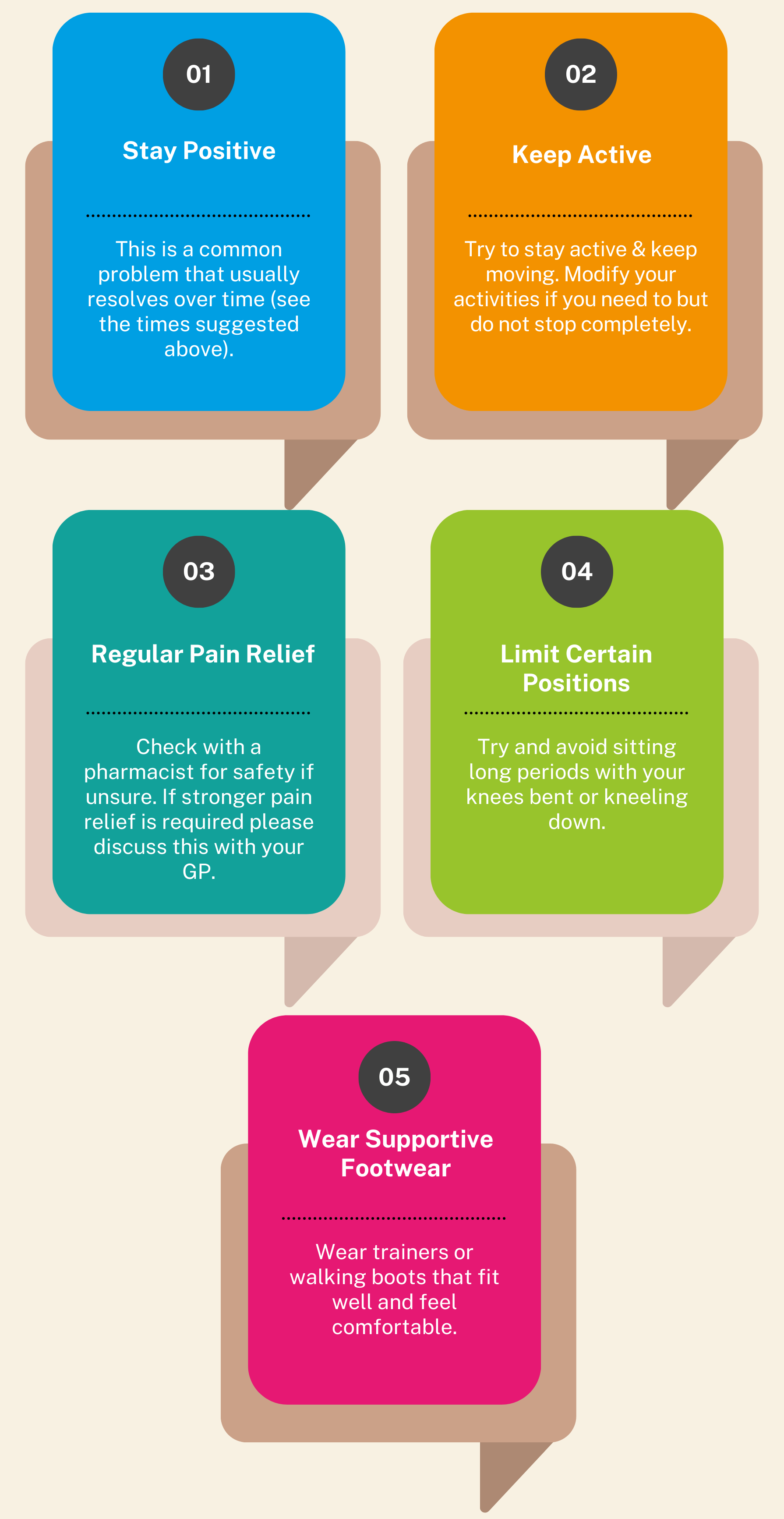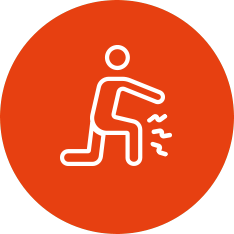Patello-femoral Pain
What is patello-femoral pain?
Patello-femoral pain refers to pain or discomfort that is felt at the front of the knee. It is sometimes also referred to as Anterior knee pain.
It often involves your knee cap (patella) and the surrounding tissues.
Most patello-femoral pain will settle. It can take up to 6 months and you will need to be patient to see results.
What are the symptoms?
All symptoms can vary in intensity and may come and go:
- Discomfort/pain felt at the front of the knee
- Pain sitting in one position for too long
- Pain going down stairs or hills
- Pain on kneeling
- You may experience a sensation of the knee locking or giving way
- Occasionally there maybe some mild swelling with the knee feeling a little warmer to touch
- You may feel a grating or grinding feeling or even hear these
What are the causes?
The exact cause is now always known, but there are many different reasons that can contribute to patello-femoral pain. These include;
- An increase to your usual activity levels or changes to your exercise habits
- Weakness or tightness in hip and knee muscles affecting how the patella moves up and down in its groove
- An injury to the knee such as a fall or during sport
- Previous surgery to the knee
- Issues with your foot or ankle
- Being overweight
- Age - It is more common in adolescents
For more information to help support your general health and well-being, please click here to access our "Healthy You" page. This includes information on exercise, mental health, smoking and weight management.
How long will it last?
Everyone's pain is different and full recovery can depend on multiple factors, but most people will make a full recovery. Most people will see some improvement following 12 weeks of lifestyle changes, advice, and an exercise program. Healing can be a slow process and can take up to 6 months to fully resolve.
What can I do to help myself?

What else can I do?
Increasing general aerobic exercises such as brisk walking, cycling, or swimming have been shown to help. You can also do regular exercise focusing on movement and strengthening the knee. We have included some exercises below for you to try:
Patello-femoral joint exercises - EASY
Patello-femoral joint exercises - MODERATE
Patello-femoral joint exercises - ADVANCED
Do I need an x-ray or a scan?
In most cases, no. A good history and physical examination of your knee alone provides enough information to diagnose your problem. Scans and x-rays are not always useful for diagnosing knee pain. While a scan or x-ray may provide information it rarely alters the treatment plan.
Imaging findings are very poorly linked with pain and often people with no pain have very similar findings on their scans/x-rays to those that do. X-rays and scans can help for a small number of people in certain situations and will be recommended by a healthcare professional if required.
Symptoms to check
Click the plus sign to see a list of problems that could be a sign you may need to be checked urgently
Get advice from 111 now if:
- your knee is very painful and you cannot put any weight on it
- you have direct injury to the knee and it has become very swollen very quickly (within 60 minutes)
- your knee is badly swollen or has changed shape
- you have a very high temperature, feel hot and shivery, and have redness or heat around the knee – this can be a sign of infection
111 will tell you what to do. They can tell you the right place to get help if you need to see someone.
Go to 111.nhs.uk or call 111.
Immediate medical advice is available by contacting NHS 111


 Knee
Knee